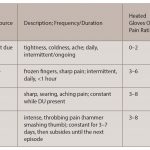Before the training sessions, these individuals contaminated themselves 60% of the time, compared to almost 19% after the sessions. The improvements were still seen at re-tests done one and three months later.
“This suggests that training using fluorescent lotion can be useful to identify minor deficiencies in technique that lead to contamination,” Donskey said.
Recent experience with the Ebola virus in the U.S. demonstrated that self-contamination during removal of protective equipment does occur, but this study exposes a more widespread issue that may be happening during routine patient care, said Dr. Michelle Doll of Virginia Commonwealth University in Richmond who coauthored a commentary on the new study.
“Use of gowns and gloves for contact precautions on a busy inpatient unit is costly on multiple levels,” Doll told Reuters Health by email. “In situations when we do decide to use these tools (for infection prevention, we need to optimize techniques to achieve the best efficacy possible. Otherwise it is wasteful of healthcare worker efforts and hospital resources.”
The sight of fluorescent dye on one’s face and hands would be a powerful and lasting lesson, she said.
“Being able to see where contamination occurs allows personnel to make adjustments in their technique,” Donskey said. “Because training alone did not result in zero contamination, there is a need for other approaches such as improving (equipment) design or disinfection of (equipment) prior to removal.”


